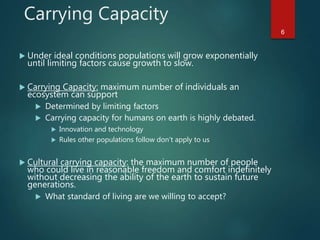Human population growth has exploded in the last 200 years due to decreased mortality rates and advances in technology and medicine. This growth puts significant stress on limited natural resources and the environment. Factors like access to healthcare, education, economic development, and women's empowerment can help slow population growth rates. Technology will continue playing a key role in addressing these issues but also mitigating our environmental impacts as our numbers increase. The next few decades will be critical in determining what the future holds.






























